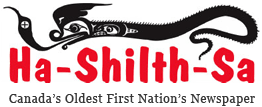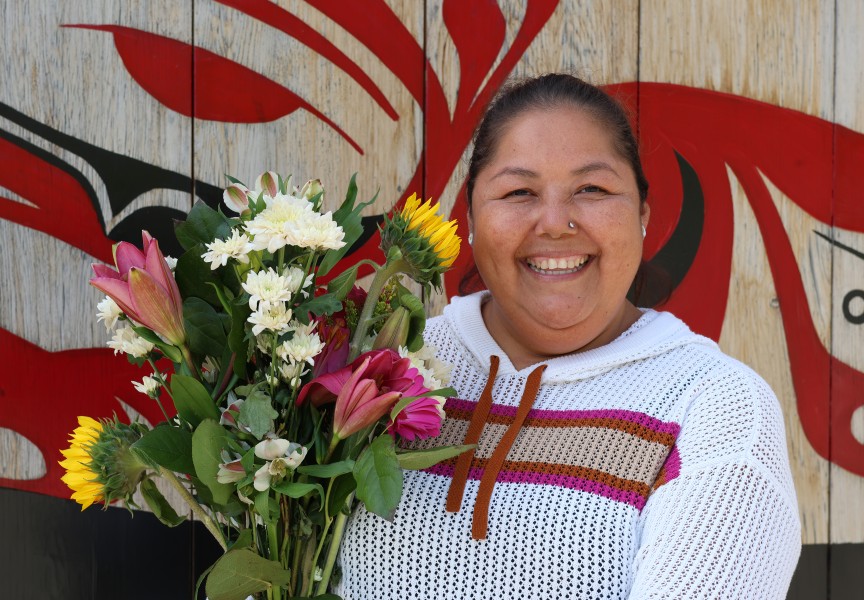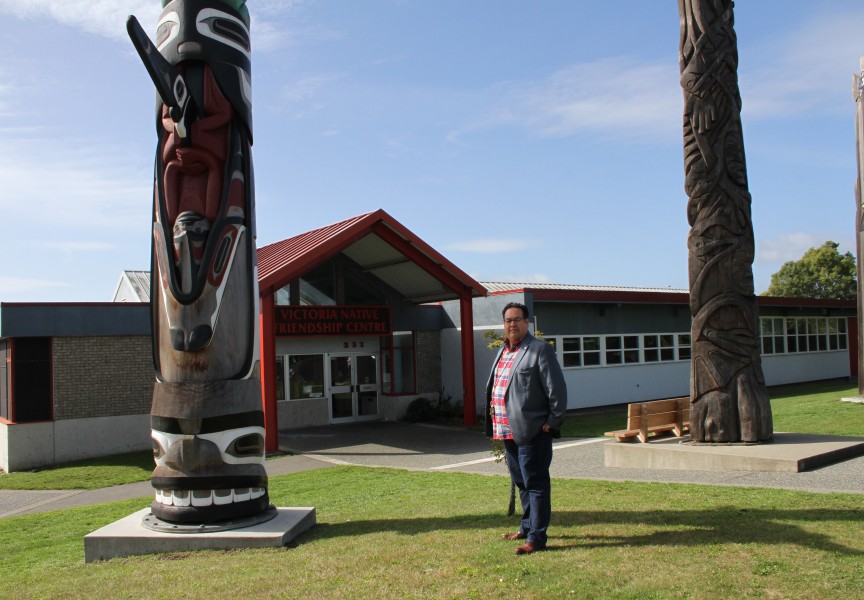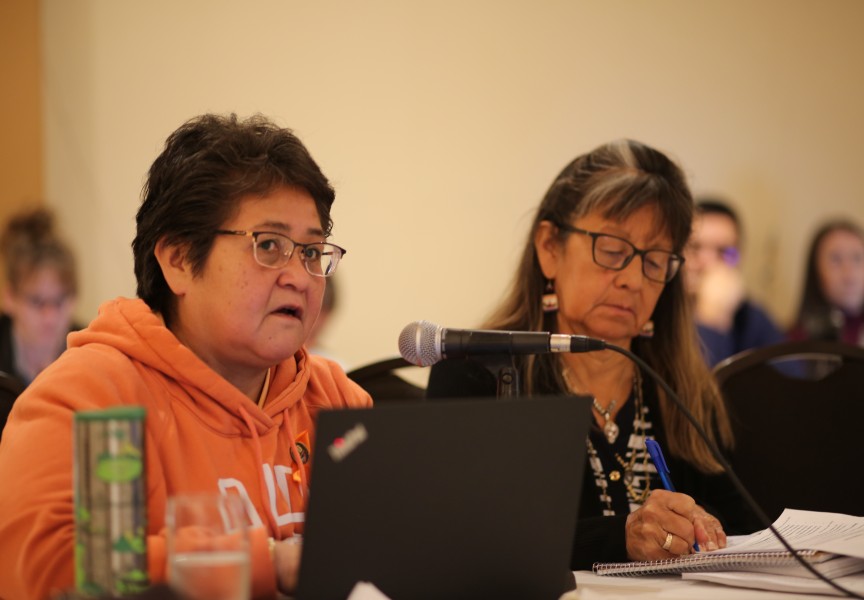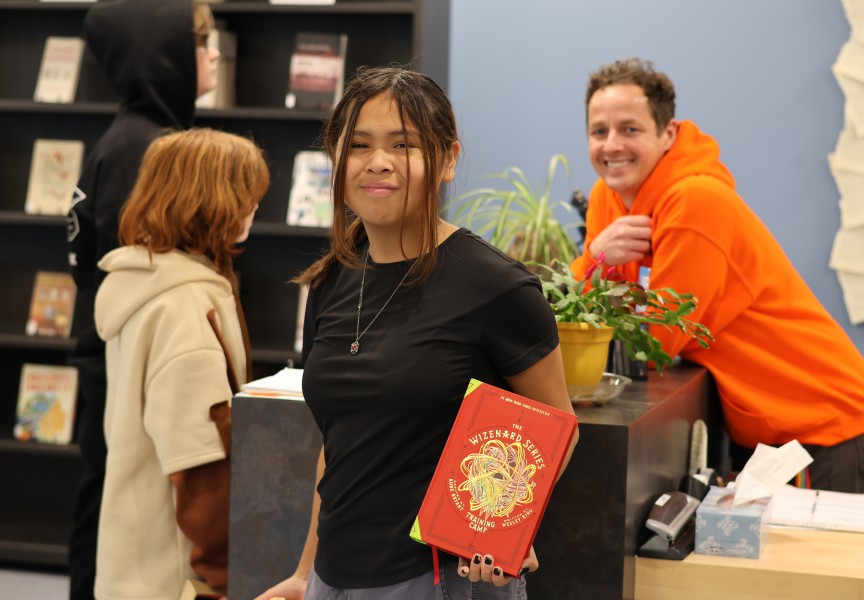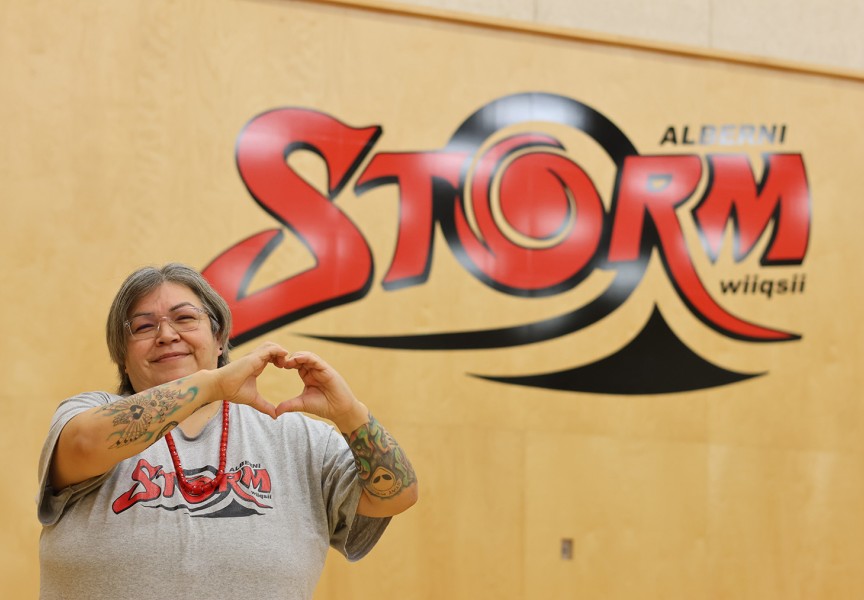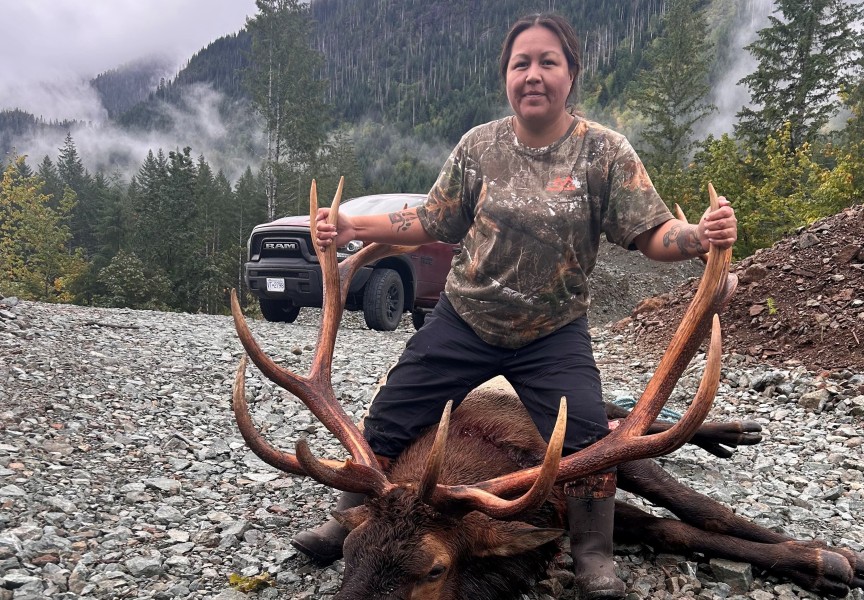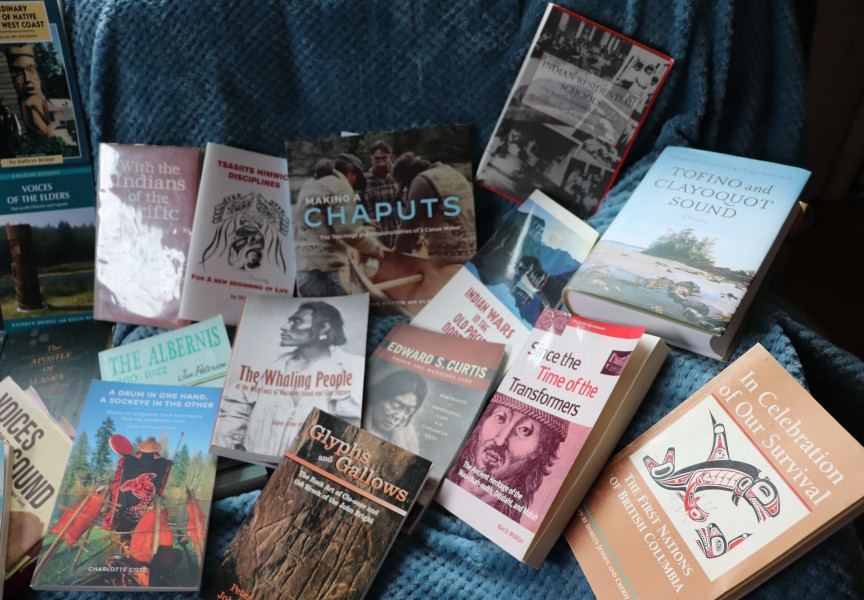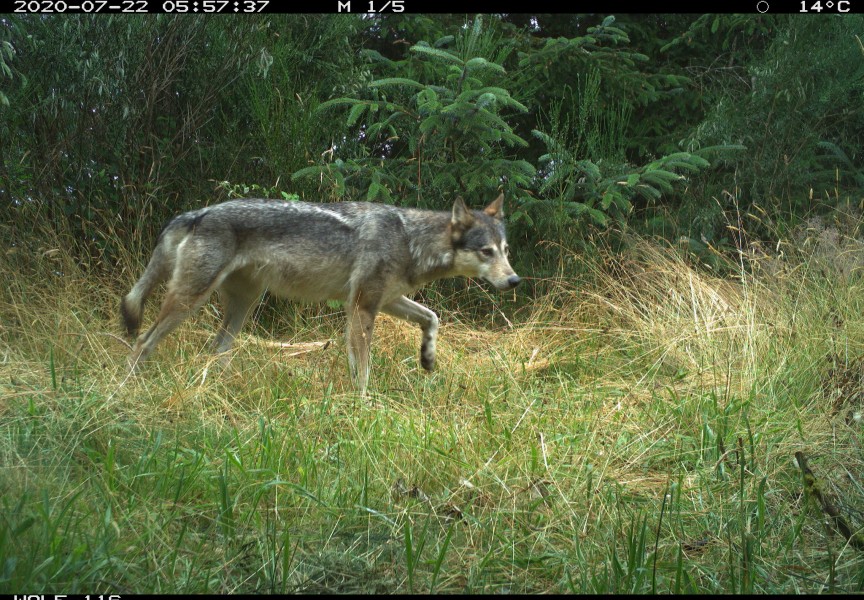ḥakaƛ, Chrissie John, began speaking Nuu-chah-nulth at home at a young age; it was her mother’s first language before being taken off to residential school
“We were the first generation raised with English. We grew up knowing animals, kinship, terms of endearment, things like that but we didn’t speak fluently” ḥakaƛ shares.
ḥakaƛ has five siblings, and like other Nuu-chah-nulth people, grew up knowing different words tied to the language. ḥakaƛ’s thirst for learning began to grow, and it has become a passion.
ʔiicʔa, Katie Fraser, was one of the first fluent mentors she worked with. There’s also her nan, Fedilia, “who I have worked with on and off from the beginning, but more in the last four years”, said ḥakaƛ.
Ciisma, Patti Frank, and Patti’s sister
Tuu paat, Julia Lucas, were big influences through the teacher program ḥakaƛ took in 2018.
“I am very lucky to have had time with all those speakers,” reflected ḥakaƛ. “It’s a selfless thing to want to pass on language and that’s what they have all done.”
The Mowachaht/Muchalaht First Nation is in their first year of running a language program, partnering with the University of Victoria. Students work toward a certificate in Indigenous Language Revitalization in the intensive program. The classes delve into strategies to learn language and what works for language revitalization in general. It also explores history tied to language, what people might call language loss or language shift, approaches to learning language, to revitalizing language, to preserving language, documenting language - all that can be tied into language revitalization.
ḥakaƛ, who is a member of the Ehattesaht First Nation, will be an in-person instructor for this two-weekend, four-day course in Gold River.
Because Nuu-chah-nulth isn’t historically a written language, teachers aren’t in a position to turn to a curriculum website. Teachers can’t find lessons in the language, they must create everything from scratch.
“How well we prepare is going to impact how well the student can learn,” said ḥakaƛ. “Because it’s an oral language rather than written our level of fluency can impact the learning for the student as well.”
MMFN has already selected a cohort of 20 students who have already started their first language course. The one Ḥakaƛ picks up teaching begins on June 28; it will be the second level of the course.
The First Peoples Cultural Council (FPCC) reports a growing number of First Nations language learners in British Columbia. Their 2023 report indicates a 20 per cent increase in learners since 2018. The report also highlights the importance of younger generations learning and speaking these languages.
“Every new language learner helps to keep our language alive. It doesn’t matter which nation they may come from, every new learner has a key role in that, we all have a role, it’s not up to one person. It would be impossible for one person to save our language.” ḥakaƛ said. “It’s really tough for one nation to only work with their nation, if we could work more together - because of the position all of [Nuu-chah-nulth] is in with language right now being endangered - working together I think is going to be essential. And that’s why I am so excited to work with our neighbor MMFN for this program.”
